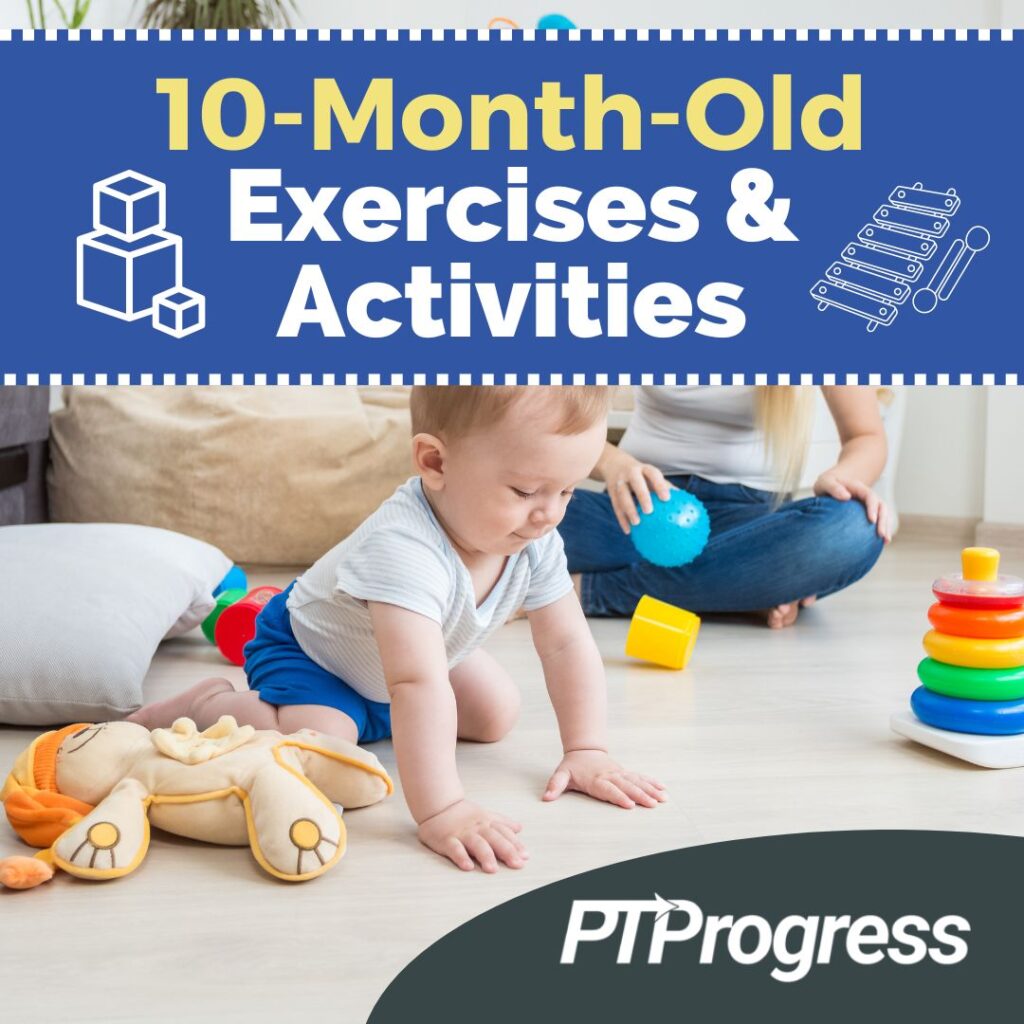
Whether they intend to or not, a 10-month-old baby is prone to getting into all kinds of trouble around the house! That’s because they’ve recently discovered how to move on their own and change positions, reaching and climbing more than ever before. If you need to keep your baby occupied—and out of the things they shouldn’t be getting into—keep reading for some 10-month-old exercises and activities!
Exercises and Activities for 10-Month-Olds
Grasping
By 10 months of age, your baby should be using a pincer grasp fairly regularly when playing or eating. This thumb-and-forefinger grasp paves the way for other fine motor skills, such as zipping, buttoning, and eventually writing. If you haven’t seen your baby use a pincer grasp yet, here are some activities that can encourage this grasp and strengthen the muscles involved.
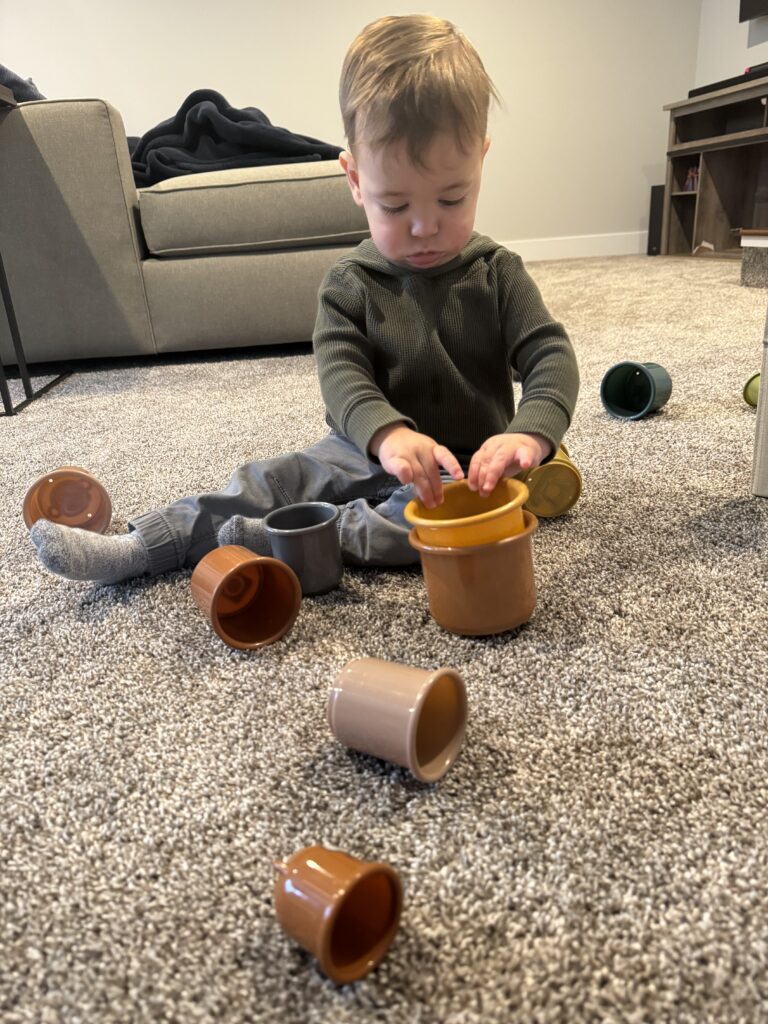
- Pulling and squeezing activities: Any activity that requires your baby to pull or squeeze will help strengthen their hand muscles. Look for activities that involve the index finger specifically. For example, the switchboard toy from Lovevery will train your baby to use their index finger to press buttons and flip switches.
- Small finger foods: At mealtimes, give your baby small pieces of food to pick up. If they keep fisting their food and using their whole hand to pick it up, try placing the food in a small bowl or a plate with divided sections. The space constraint should encourage your baby to use just their pointer finger and thumb to pick up the food.
Crawling
Whether or not your baby has started crawling, the activities below will help them prepare and practice this skill!
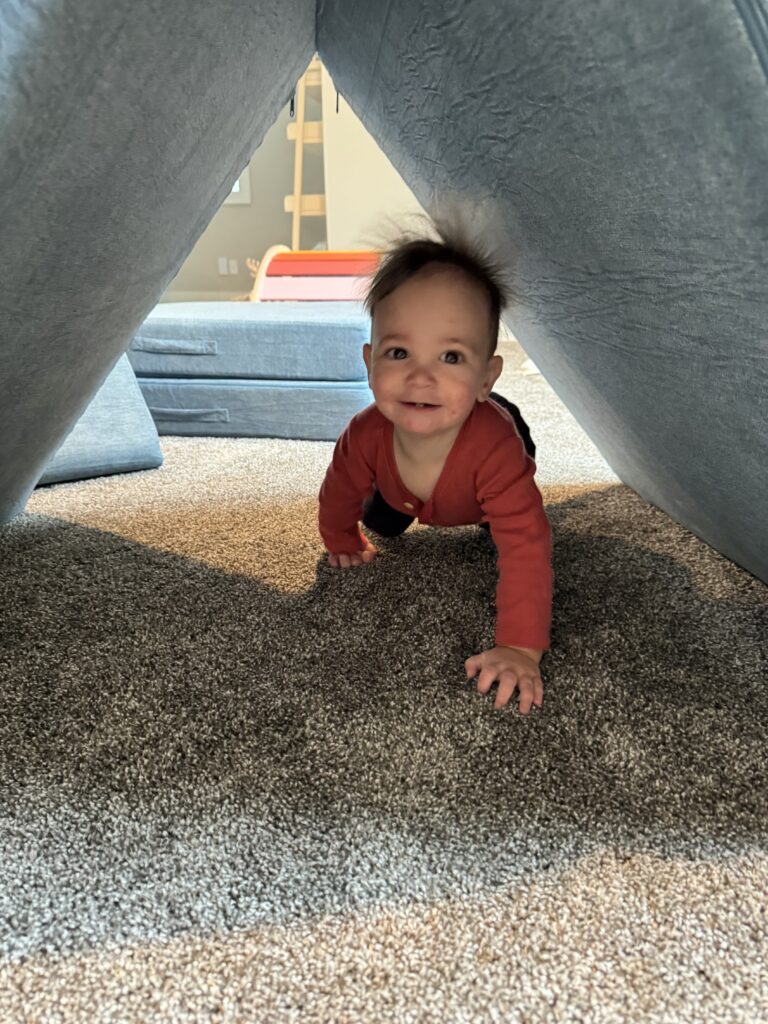
- Play Fetch: Roll or throw a ball beyond your baby’s reach so they have to move to retrieve it. Based on their crawling ability, you could roll it far across the room or just a few feet away.
- Scatter their toys: In a similar manner, spread out their toys so their favorites are not all within arm’s reach. Don’t forget you’re a favorite, too! Intentionally position yourself away from your baby when you play together so that they will have to move to catch you.
- Play Chase: As mentioned in last month’s guide, playing chase or crawling through tunnels can make the hard work of learning to crawl fun and automatic.
High Kneeling
The kneeling position is integral to the development of future milestones, such as standing and walking. But your baby will need strong core muscles and good balance to maintain a high kneeling position. The below ideas can help them build up strength until kneeling becomes second nature.
- Elevate their toys or books onto a shelf or cushion. They’ll naturally rise to their knees to reach their favorite items. You can also put their toys in a tall box, which will encourage them to sustain a kneeling posture as they rummage.
- Play with bubbles or a balloon: These fun, uplifting props tend to quickly direct attention upwards. Your baby will love reaching up to pop the bubbles or diving to catch the balloon as it floats through the air!
Sensory Play
Sensory play helps your baby explore the 5 main senses of auditory, tactile, visual, taste, and olfactory. There are countless ways to incorporate sensory activities into playtime, but below are just a few:
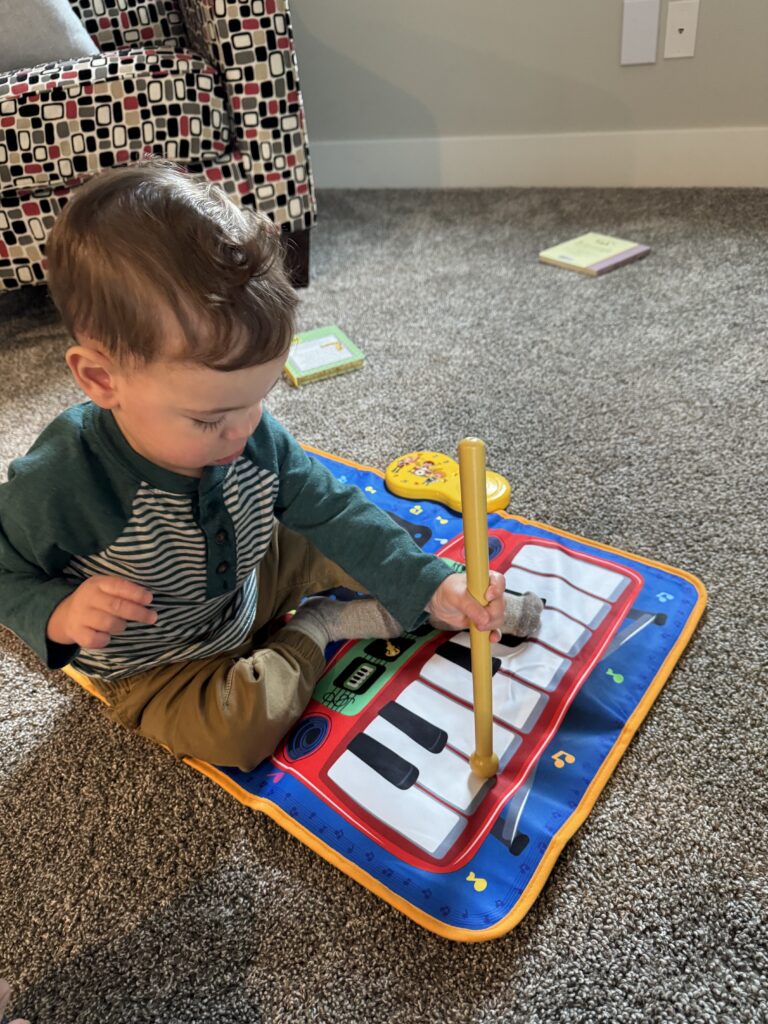
- Water play: Most babies love to splash in the tub at bath time or outside in a kiddie pool in warm weather. But another way you can introduce water play is to sign up your baby for swim lessons at a local swim school or YMCA. You’ll both have fun, and your baby will learn life-saving skills from a young age. *With all water play, be sure to supervise your baby at all times.*
- Musical play mat: When you’re ready to start making music with your baby, give them a musical cause-and-effect toy like a play mat. Your baby will learn to press certain parts of the mat to make noises come out of the speaker, like their very own keyboard!
- Pull-string toys: To further explore the interaction of tactile and auditory senses, consider this pull-string toy. Featuring soft cords of various textures, the toy makes a different noise depending on which cord is pulled. Little Jack loves pulling on each string, hearing the distinct noises it makes, and fingering the different textures on the toy.
- Playing music or singing to your baby: These auditory activities never get old, and they don’t cost a thing. To keep your baby engaged, try singing an interactive song, such as “Patty-cake” or “Heads, Shoulders, Knees and Toes.”
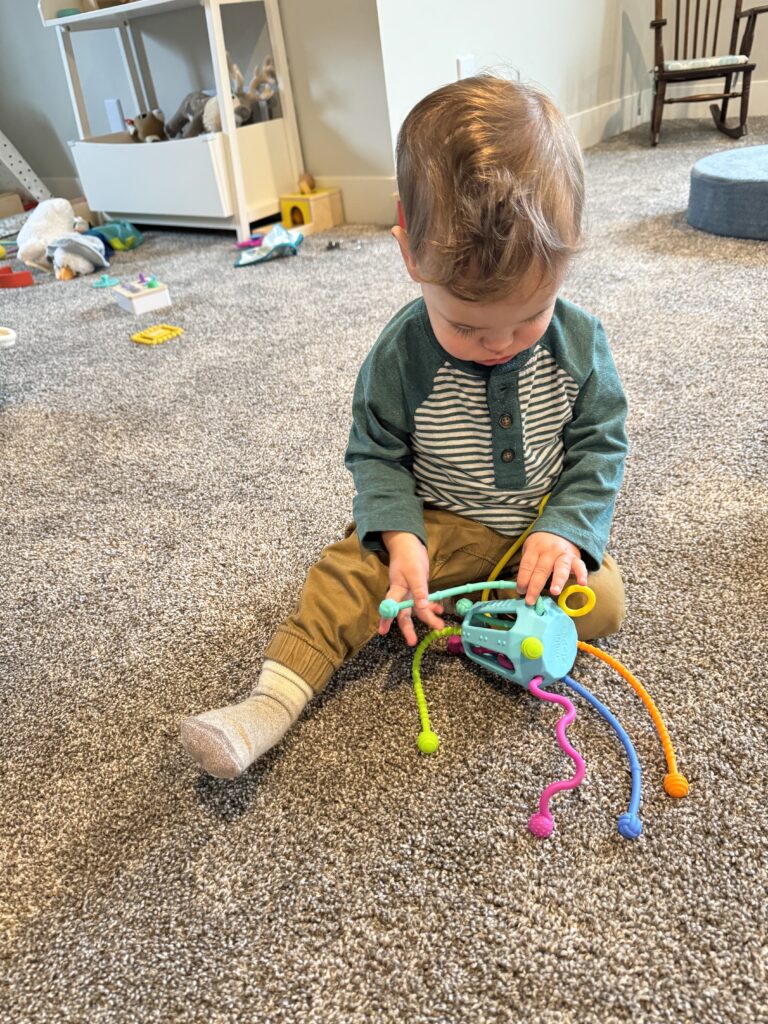
Supervised Eating
- Serve what you’re eating: A 10-month-old can eat almost anything you eat, so long as it’s suitable. They’ll enjoy imitating you while also developing a more diverse palate.
- (Re)introduce unfamiliar foods: Keep offering unfamiliar foods to your baby, even if they’ve tried it already but didn’t like it. Sometimes it takes a few tries to acquire a new taste!
- Make food easy to eat: Cook foods a little longer with your baby in mind. They only have a few teeth at this age, so softer foods, like cooked vegetables and pasta, will be easier to chew.
- Using a straw should be getting easier now for your baby. A few times a day, try switching out their bottle for a cup with a straw so they can practice more. If they don’t seem to be getting enough milk, go back to the bottle until they are ready to transition. It may be the type of cup they’re using; try a few styles to figure out what your baby prefers. Jack enjoys this cup, which is leakproof and dishwasher safe.
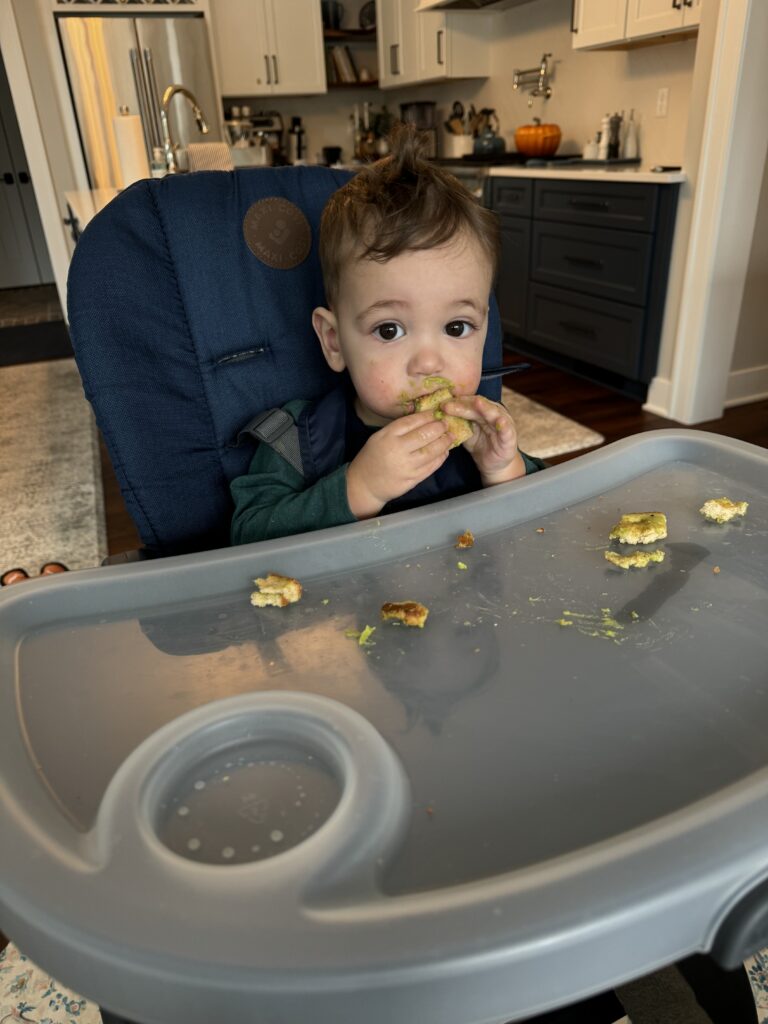
Reading Books
Reading with your baby can help them develop language skills, and you’ll likely be reading to them for the next several years. Here are a few things to keep in mind when you sit down for storytime:
- Point and name the items in the pictures (hat, baby, animals, truck, etc.) Stick to a few key words per page so it’s not overwhelming.
- Identify those items in real life. This simple application can help your baby make connections, such as between the “truck” they see in the book and the one parked in the driveway. Soon enough, they will do this on their own, calling out the names of items they recognize from their books.
- Read books meant for babies, specifically ones that feature fun textures, interactive flaps, cut-outs, and thick pages for easy turning.
Standing and Dancing
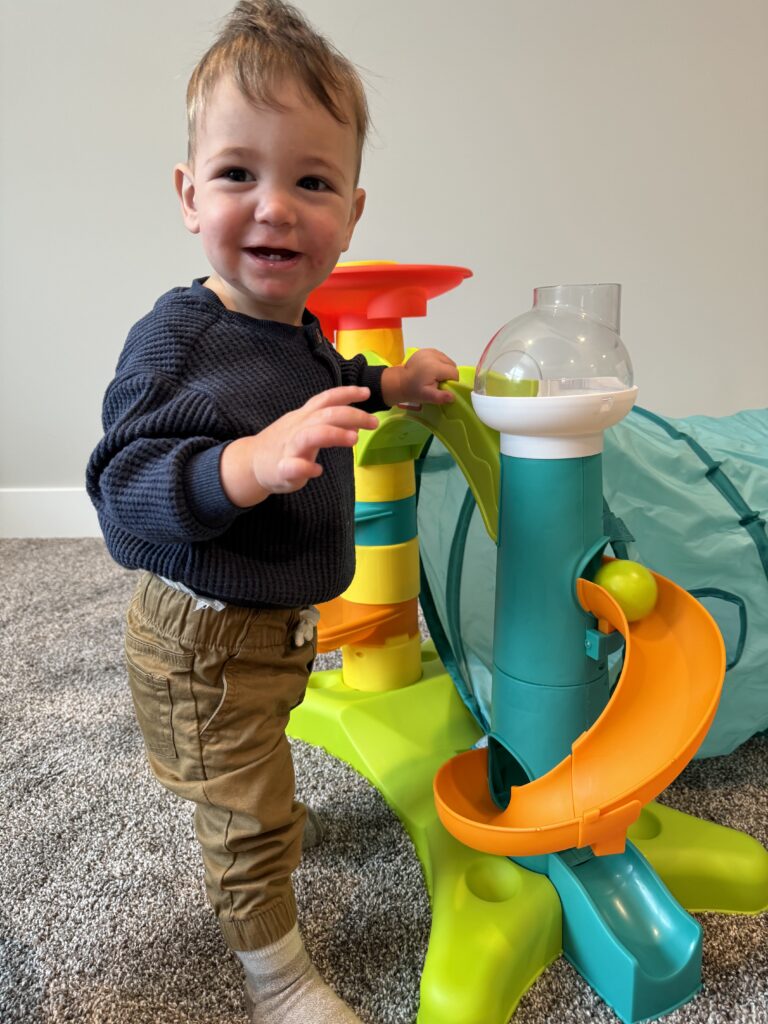
Even if they are still unsteady on their feet, getting up and dancing can help your baby develop strength, motor control, and body awareness. Be mindful of your baby’s surroundings and ready to provide support for the following standing activities:
- Elevate their toys: Place toys at standing height on the couch, a shelf, or a table so your baby must stand tall to access them. They’ll have even more of an incentive to pull up on the furniture to stand!
- A tall toy, like this activity tunnel with ball drop, will give your baby another reason to get up on their feet. To play, your baby will need to repeatedly bend down and reach for the ball on the floor, then stand back up to drop it down the chute. As you can see, Jack loves playing with this toy!
Conclusion
Playtime for a 10-month-old is progressively more elevated, more spread out, and more fun as your baby grows more mobile. But don’t forget to also incorporate sensory exploration and language skills into playtime; your baby is developing rapidly inside and out! You can find more playtime ideas by checking out the previous activity guides right here on the blog!

